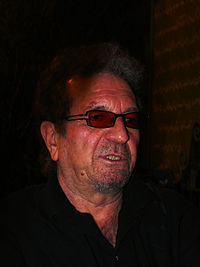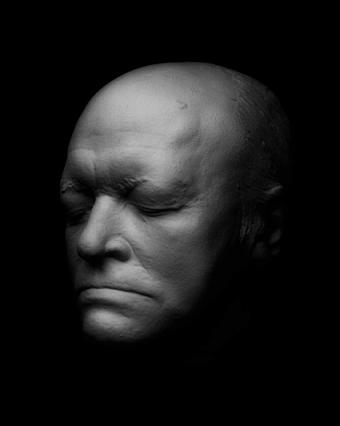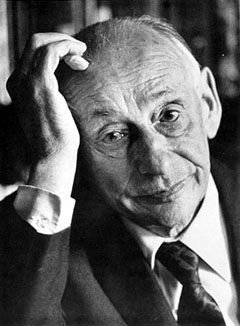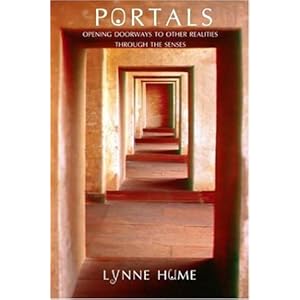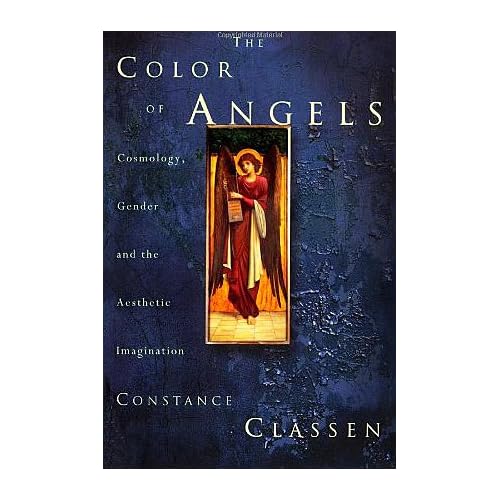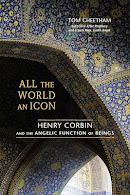"...the Imagination (or love, or sympathy, or any other sentiment) induces knowledge, and knowledge of an 'object' which is proper to it..."
Henry Corbin (1903-1978) was a scholar, philosopher and theologian. He was a champion of the transformative power of the Imagination and of the transcendent reality of the individual in a world threatened by totalitarianisms of all kinds. One of the 20th century’s most prolific scholars of Islamic mysticism, Corbin was Professor of Islam & Islamic Philosophy at the Sorbonne in Paris and at the University of Teheran. He was a major figure at the Eranos Conferences in Switzerland. He introduced the concept of the mundus imaginalis into contemporary thought. His work has provided a foundation for archetypal psychology as developed by James Hillman and influenced countless poets and artists worldwide. But Corbin’s central project was to provide a framework for understanding the unity of the religions of the Book: Judaism, Christianity and Islam. His great work Alone with the Alone: Creative Imagination in the Sufism of Ibn ‘Arabi is a classic initiatory text of visionary spirituality that transcends the tragic divisions among the three great monotheisms. Corbin’s life was devoted to the struggle to free the religious imagination from fundamentalisms of every kind. His work marks a watershed in our understanding of the religions of the West and makes a profound contribution to the study of the place of the imagination in human life.Search The Legacy of Henry Corbin: Over 800 Posts
Monday, December 31, 2012
Friday, December 28, 2012
An Incredible Photo Archive
Daniel Proulx has put up 219 more photos in the Henry Corbin Archive - there are 250 more coming soon. These are a treasure and absolutely fascinating.
Wednesday, December 26, 2012
The Esoteric Apocalypse - Isma‘ilī Muslim Perspectives
“It is said, for example, that the Qā’im, the aim and goal of all the hudūd, the degrees or “horizons”, is the Grand Cycle of which the Imāms are the periods or partial cycles, just as each Imām is himself a cycle in relation to his ḥudūd. … It is also said that the Qā’im is the “coalescence” (majma), the corpus mysticum of all the ḥudūd; each of the Imāms has his own corpus mysticum, his Temple of Light, and all are gathered together and integrated in the Sublime Temple of the Resurrector. – Henry Corbin, (Cyclical Times and Ismaili Gnosis, 99)
Monday, December 24, 2012
Thursday, December 20, 2012
Saturday, December 15, 2012
Celestial Magic Conference
|
Tuesday, December 11, 2012
Gilbert Durand May 1, 1921 - Dec 7, 2012.
Décès de Gilbert Durand, résistant et anthropologue de l’imaginaire
From Le Soir:
Lundi 10 Décembre 2012
Gilbert Durand, ancien résistant du Vercors, directeur du Centre de recherche sur l’imaginaire et spécialiste de la mythologie, est décédé vendredi à l’âge de 91 ans, a annoncé lundi sa famille dans le carnet du Figaro. Né le 1er mai 1921 à Chambéry, Gilbert Durand avait rejoint la Résistance dès la fin de l’année 1940 et avait ensuite participé activement aux maquis du Vercors. Agrégé de philosophie et docteur ès lettres, Gilbert Durand fut professeur de philosophie, puis de sociologie et d’anthropologie à Grenoble II. Disciple de Gaston Bachelard, il avait co-fondé en 1966 le Centre de recherche sur l’imaginaire et dirigé cette structure autour de laquelle travaillèrent une soixantaine de laboratoires du monde entier. Gilbert Durand était l’auteur d’une quinzaine d’ouvrages, dont « Les structures anthropologiques de l’imaginaire’ (PUF, 1960), « L’imagination symbolique » (PUF, 1964), « La foi du cordonnier » (Denoël, 1984), ou « Les mythes fondateurs de la franc-maçonnerie » (Dervy, 2002). En 2000, il avait reçu le titre de « Juste parmi les nations », la plus haute distinction décernée par Israël à ceux qui ont sauvé au péril de leur vie des juifs pendant la guerre. En 2007, le grand résistant Raymond Aubrac lui avait remis la cravate de commandeur de la Légion d’honneur pour ses actions dans la Résistance. Gilbert Durand était également titulaire de la médaille de la Résistance avec rosette, de la Croix de guerre 1939-1945 avec palmes et commandeur des Palmes académiques.
Friday, December 7, 2012
The conferences de la Journée des amis de Corbin are now online.
Selected talks at the Conferences de la Journée des amis de Corbin are now online HERE
Many thanks to Daniel Proulx for his amazing work on the website...
Thursday, December 6, 2012
Henry Corbin and Iran, Islam, Philosophy and Revolution
Varzi is Associate Professor of Anthropology, Film and Media Studies, Visual Studies, Religious Studies, and Persian Studies, University of California, Irvine
The French Connection: Henry Corbin and Iran, Islam, Philosophy and Revolution
There’s no denying that Henry Corbin was an important part of Iranian history and Western philosophy and yet nothing has been written about his role in the pedagogy of the Iranian revolutionaries who were to bring about the Iranian Revolution or what he referred to as a “shadow of evil.” My project while at the IFK is to research and write on Corbin’s revolutionary legacy. More here.
Wednesday, December 5, 2012
New Translation of Nāṣir-i-Khusrow
From Wahid Nazal:
"The piece was summarized by Henry Corbin in several places including Cyclical Time and Isma'ili Gnosis, see especially pp. 36-37. To date, our translation appears to be the only full length translation of this entire section of the following work by Nāṣir-i-Khusrow. We note that additional to this blog entry, apdf of our translation below can also be found, here."
Monday, December 3, 2012
N. O. Brown, Corbin, Islam
An new essay online - from which,
To bring Islam into the historical picture is for Brown akin to a Copernican revolution: following in the steps of Marshall Hodgson, Louis Massignon, and Henry Corbin, with Brown “we are moving out from under the schema of Christocentric world history, stamped on the minds of orthodox Westerners . . . into ampler and more Islamic, air.”
Friday, November 30, 2012
Tuesday, November 27, 2012
Saturday, November 24, 2012
Journal News
Thursday, November 8, 2012
Saturday, October 20, 2012
Announcing the New Official Henry Corbin Website
It is with very great pleasure and excitement that I announce the appearance of the magnificent new website
of Les Amis de Henry et Stella Corbin:
The entire community of those interested in the life and work of Corbin should give thanks to Daniel Proulx for the enormous labor that this site represents. It is instantly the premier Corbin website on the internet and the primary place to go for news and documents concerning Corbin. There is a stunning wealth of material available including links to online texts by and about Corbin, photographs, news and more. And M. Proulx promises more to come in the near future including selections from the vast treasure of documents in the Corbin Achive in Paris. It is long past time for this wonderful resource to become available to the world-wide community of "Corbinistes." It is worth spending quite a long time exploring.
Monday, October 15, 2012
Mundus imaginalis in Buenos Aires
Literatura | Programación actual
| |||||||||
|
Monday, October 8, 2012
8e Journée Henry Corbin « Qu’est-ce que la mystique ? »
8e Journée Henry Corbin
« Qu’est-ce que la mystique ? »
le samedi 1 décembre 2012
à l’Ecole Normale Supérieure, 45 rue d’Ulm, 75005 Paris, salle Dusanne
Matinée
9h 30 : Leili ANVAR-CHENDEROFF (INALCO) : « La mystique peut-elle se dire? Le cas de Farid od-dîn 'Attâr »
10 h 30 : Daniela BOCCASSINI (Université de Vancouver) : « De la «Vita Nova» à la «Vista Nova»: le parcours mystique de Dante »
11 h 30 : Daniel DE SMET (CNRS) : « Y a-t-il une mystique ismaélienne ? »
Après-midi
Après-midi
14 h 30 – 17 h : Table ronde sur le thème « Qu’est-ce que la mystique chez Henry Corbin ? », avec Christian JAMBET (EPHE), Daniel PROULX (Université de Louvain), Pierre LORY (EPHE), suivie d’un échange avec le public.
Friday, October 5, 2012
Powerful Women: Painting and Building in Persianate Culture
Sussan Babaie, Professor of Persian Art and Architecture, The Courtauld Institute of Art, University of London
Women courting princes, visiting mausoleums, bathing and dancing at court, hunting— Persianate book painting of the fifteenth century is extraordinarily rich in images of women. Equally impressive are extant examples of monumental patronage by women of the House of Timur. Explore the implications for patronage in this period of the "female touch." This program is made possible by the American Institute of Iranian Studies.
Thursday, September 27, 2012
Monday, September 17, 2012
Olson's Curriculum of the Soul
Readers of this blog will know of the importance of Henry Corbin to Charles Olson. For example see posts here, and here and here... Now we have this wonderful short history by Joanne Kyger:
and the news that the Curriculum volume can be had, for $3000, on amazon... an electronic version is planned...
Friday, September 14, 2012
New Book on Mulla Sadra
by Mohammed Rustom
(with multiple references to Henry Corbin)
(with multiple references to Henry Corbin)
This book investigates the convergence of philosophy, scriptural exegesis, and mysticism in the thought of the celebrated Islamic philosopher Mullā Ṣadrā (d. 1050/1640). Through a careful presentation of the theoretical and practical dimensions of Ṣadrā’s Qur'ānic hermeneutics, Mohammed Rustom highlights the manner in which Ṣadrā offers a penetrating metaphysical commentary upon the Fātiḥa, the chapter of the Qur'ān that occupies central importance in Muslim daily life. Engaging such medieval intellectual giants as Fakhr al-Dīn al-Rāzī (d. 606/1210) and Ibn 'Arabī (d. 638/1240) on the one hand, and the wider disciplines of philosophy, theology, Sufism, and Qur'ānic exegesis on the other, Ṣadrā’s commentary upon the Fātiḥa provides him with the opportunity to modify and recast many of his philosophical positions within a scripture-based framework. He thereby reveals himself to be a profound religious thinker who, among other things, argues for the salvation of all human beings in the afterlife.
“By focusing on Ṣadrā’s commentary on the Qur'ān’s opening chapter, Rustom shows how the great Iranian thinker created an original Qur'ānic hermeneutics as well as a new ontology of the Qur'ān. Rustom’s book is a groundbreaking and richly detailed study of the way that Ṣadrā both appropriated and transcended the Islamic traditions of theology, mysticism, philosophy, and scriptural exegesis.” — Robert Wisnovsky, author of Avicenna’s Metaphysics in Context
“Mohammed Rustom has opened the door to a remarkable philosophical exegesis of the Qur'ān in this pathbreaking study of the outstanding Iranian thinker of the seventeenth century, Mullā Ṣadrā. In the process, he clarifies the profound connections between philosophy, Sufism, and Islamic theology in Ṣadrā’s work. This absorbing study will be welcomed by anyone interested in the fundamental question of how reason interacts with revelation.” — Carl W. Ernst, author of How to Read the Qur'ān: A New Guide, with Select Translations
“This first book-length survey of Mullā Ṣadrā’s Qur'ānic commentaries is a major contribution to the study of this seventeenth-century Muslim philosopher and to the field of philosophical exegesis in Islam. Mohammed Rustom presents Ṣadrā’s vision for the unity of the ‘intellectual’ and ‘transmitted’ sciences and gives us a complete picture of a first-rate thinker contemplating upon the Qur'ān. He does an excellent job of contextualizing Ṣadrā’s Qur'ānic hermeneutics within the framework of his ‘Transcendent Wisdom’ and shows how scriptural reasoning complements philosophical vision. Based on an in-depth reading and translation of Ṣadrā’s key texts on Qur'ānic exegesis, the book examines a much-neglected aspect of Ṣadrā’s thought and introduces the reader to the rich philosophical tapestry of the Islamic intellectual tradition.” — Ibrahim Kalin, author of Knowledge in Later Islamic Philosophy: Mullā Ṣadrā on Existence, Intellect, and Intuition
Thursday, September 13, 2012
What do you think has become of the young and old men?
And what do you think has become of the women and children?
They are alive and well somewhere,
The smallest sprout shows there is really no death,
And if ever there was it led forward life, and does not wait at the
end to arrest it,
And ceas'd the moment life appear'd.
All goes onward and outward, nothing collapses,
And to die is different from what any one supposed, and luckier.
- Walt Whitman, Song of Myself
Wednesday, September 12, 2012
Le rôle de l’imagination dans l’expérience spirituelle d’Ibn al-ʿArabī et de Jakob Böhme
by Daniel Proulx
Résumé
Henry Corbin a écrit qu’« un Maître Eckhart et un Jacob Boehme eussent parfaitement compris Ibn ʿArabî, et réciproquement. » Mais comment assurer ce dialogue et cette compréhension réciproque pressentie par Henry Corbin? Cette recherche porte essentiellement sur les conditions de possibilités de ce dialogue, puisque la comparaison entre Ibn al-ʿArabī et Böhme n’est encore qu’à ses balbutiements. En choisissant le prisme de l’imagination, le but est double : pouvoir traiter de manière non réductrice les phénomènes spirituels en parcourant et analysant la logique spécifique de l’imagination ; et, sous l’égide de la hiérohistoire, explorer le rôle de l’imagination dans la métaphysique et l’éthique d’Ibn al-ʿArabī et de Böhme. Il s’agit donc d’essayer de lire Ibn al-ʿArabī et Böhme comme ils lisaient eux-mêmes le Livre révélé de leur tradition respective. Au final, il appert que le théophanisme caractéristique tant de la métaphysique d’Ibn al-ʿArabī que de celle de Böhme est une riche terre d’accueil de l’imagination et de l’imaginal. Et que, si la comparaison strictu sensu entre Ibn al-ʿArabī et Böhme est impossible, l’esprit comparatif et transdisciplinaire de cette recherche, ainsi que la méthode phénoménologico-herméneutique, offrent de nouvelles avenues de réappropriation pour l’ensemble des phénomènes spirituels.
Abstract
Henry Corbin wrote that a “Meister Eckhart and Jacob Boehme would fully understand Ibn ʿArabî, and vice versa.” But how can we ensure this dialogue and mutual understanding anticipated by Henry Corbin? This research is essentially on the conditions of possibilities of this dialogue, especially because the comparison between Ibn al-ʿArabī and Böhme is still in its infancy. By choosing the prism of the imagination, the goal is twofold: approach spiritual phenomena in a non-reductive way by browsing and analyzing the specific logic of imagination; and, under the auspices of the concept of hierohistory, explore the role of imagination in the metaphysics and ethics of Ibn al-ʿArabī and Böhme. It is therefore an effort to read Ibn al-ʿArabī and Böhme as they read themselves the revealed book of their respective tradition. Finally, it appears that the theophanism characteristic of the metaphysics of both Ibn al-ʿArabī and Böhme is a rich haven for imagination and imaginal. If the comparison between Ibn al-ʿArabī and Böhme is stricto sensu impossible, the comparative and transdisciplinary spirit of this research, as well as its the phenomenological-hermeneutic method, opens up new avenues of re-appropriation for all spirituals phenomena.
Direct Download

Tuesday, September 11, 2012
SUFIism at the Smithsonian: Searching for the Divine through the Arts
COMING ON SEPTEMBER 23
Join us for a two-day symposium attempting to reinterpret, redefine and broaden the concept of SUFIism through scholarly talks, dramatic renderings of mystical poetry, soul-searching music, creative expressions in dance, artist talks, and fascinating films.
Contact: Manjula Kumar at kumarm@si.edu, or on facebook.com/smithsonianeducation/events.
Join us for a two-day symposium attempting to reinterpret, redefine and broaden the concept of SUFIism through scholarly talks, dramatic renderings of mystical poetry, soul-searching music, creative expressions in dance, artist talks, and fascinating films.
Contact: Manjula Kumar at kumarm@si.edu, or on facebook.com/smithsonianeducation/events.
Thursday, August 30, 2012
Corbin & Mehrjui
From the Iran Book News Agency:
Dariush Mehrjui's 2nd novel is discussed -
"Mehrjooyi is familiar with Islamic philosophy and mysticism and this should be a result of his friendship with Professor Dariush Shayegan and his reading of Henry Corbin."
Monday, August 20, 2012
Article of Interest
Wednesday, August 8, 2012
8e Journée Henry Corbin
8e Journée Henry Corbin
« Qu’est-ce que la mystique ? »
le samedi 1 décembre 2012
à l’Ecole Normale Supérieure,
45 rue d’Ulm, 75005 Paris,
salle Dusanne
(programme provisoire)
Matinée
9h 30 : Leili ANVAR-CHENDEROFF (INALCO) : « La mystique peut-elle se dire? Le cas de Farid od-dîn 'Attâr »
10 h 30 : Daniela BOCCASSINI (Université de Vancouver) : « De la «Vita Nova» à la «Vista Nova»: le parcours mystique de Dante »
11 h 30 : Daniel DE SMET (CNRS) : « Y a-t-il une mystique ismaélienne ? »
Après-midi
14 h 30 – 17 h : Table ronde sur le thème « Qu’est-ce que la mystique chez Henry Corbin ? », avecChristian JAMBET (EPHE), Daniel PROULX (Université de Louvain), Pierre LORY (EPHE), suivie d’un échange avec le public.
Monday, August 6, 2012
A New Online Journal
is a scholarly, peer-reviewed journal of philosophy, theology, and literature. Luvah provides a space to reflect on modernity, tradition, and metaphysics. We publish theoretical and critical articles, translations, interviews, and personal narratives, such as short stories and poems. Luvah also includes a book review section where scholars assess new writings broadly dealing with tradition. “Luvah” refers to our interest in reclaiming traditional means of knowing through literature, art, philosophy, and spiritual practice. Although inexact in their proclamations, these positions point toward a radical re-thinking of what it means to be human in the age of machines and virtual realities. We are interested in stories that reflect these concerns. We publish pieces that actively engage with both classic texts and the lived reality of post-modernity.
Executive Editor
Farasha Euker
Editorial Board
Keith Doubt, Wittenberg University
David Fideler, Concord Editorial
Maja Pašović, University of Waterloo
Angela Voss, University of Kent
Amy L. Washburn, City University of New York
Friday, August 3, 2012
Thursday, July 26, 2012
Coming in November
Poems for the Millennium, Volume 4:
Tuesday, July 24, 2012
Wednesday, July 18, 2012
Collecting Byzantine and Islamic Art
There are SIX in this series available at the Metmuseum youtube channel
A Scholars' Day Workshop: Collecting Byzantine and Islamic Art Part 1
Organized by The Metropolitan Museum of Art and The Center for the History of Collecting in America at The Frick Collection, this event takes place in the Byzantium and Islam: Age of Transition exhibition and the new galleries for the art of the Arab Lands, Turkey, Iran, Central Asia, and Later South Asia. Scholars and curators speak about different aspects of the collecting Byzantine and Islamic Art in front of featured works of art.
A Scholars' Day Workshop: Collecting Byzantine and Islamic Art Part 1
Organized by The Metropolitan Museum of Art and The Center for the History of Collecting in America at The Frick Collection, this event takes place in the Byzantium and Islam: Age of Transition exhibition and the new galleries for the art of the Arab Lands, Turkey, Iran, Central Asia, and Later South Asia. Scholars and curators speak about different aspects of the collecting Byzantine and Islamic Art in front of featured works of art.
Tuesday, July 17, 2012
"Read" or "Remember"?
"According to traditional interpretations, the verse (iqra bi-smi rabbika) commands the Prophet Muhammad to read the verses of the Qur’ān. But there is another way of understanding these verses, based on early Muslim tradition and sources, which yields a different interpretation and in turn reveals the spiritual secrets of the prophetic mission. This post explores how the first revelation of the Holy Qur’an – Surah al- ‘Alaq – was actually instructing the Prophet Muhammad in the remembrance (dhikr) of God’s Name and how the remembrance of the Divine Names facilitated the spiritual ascension of all the Prophets to the rank of Prophethood (nubuwwah) – including Adam, Noah, Abraham, Mary/Jesus, and Muhammad."
“This is emphasized by a hadith (a tradition) illustrating the Qur’ānic verse, which declares that Adam remained there, flung like an inert body, until God breathed His spirit into him, that is, until He has breathed into him spiritual science, the science of the esoteric things, that “science of NAMES” (Qur’ān 2:29), by means of which beings are promoted to their true being.” (Henry Corbin, Swedenborg and Esoteric Islam, 103-104)
Saturday, July 14, 2012
Tempus discretum. Henry Corbin all'Oriente dell'Occidente
Il volume raccoglie tre studî rivolti alla figura accademica e spirituale di Henry Corbin, grande iranologo francese del XX secolo, considerata nella sua funzione mediatrice fra le espressioni filosofiche e teologiche dell’Oriente e dell’Occidente, e prosegue la ricerca avviata dalla casa editrice Torre d'Ercole con la pubblicazione de Le Combat pour l’Ange (Ricerche sulla filosofia mazdea).
Il primo capitolo tratteggia le principali categorie concettuali presenti nella sua opera, fra le quali quella di Mundus imaginalis – di cui fissa le molteplici e talora misconosciute valenze – e indaga il possibile significato geopolitico della nozione di EurAsia nel progetto di un’ermeneutica spirituale comparata.
Il secondo capitolo traduce e commenta il primo articolo pubblicato da Corbin, nel 1927, sui beneficî che la conoscenza dell’Oriente potrebbe arrecare all’Occidente, e pone in luce le anticipazioni dei successivi sviluppi speculativi. La riproduzione anastatica del testo è allegata al volume.
Il terzo capitolo analizza tre nodi della riflessione corbiniana: l’angelologia, il senso personale della temporalità (chronologia) e l’eredità della teurgia ermetico-neoplatonica, per concludersi sulla possibilità che l’opera di Corbin possa contribuire alla comparazione fra le metafisiche sviluppatesi nell’àmbito del Cristianesimo e del Buddhismo .
Il risultato complessivo della ricerca qui presentata contribuisce a liberare Henry Corbin dai limiti dell’islamologia e dello stesso orientalismo, per consegnarlo al progresso del grande dialogo in corso fra le componenti “esoteriche” dell’ecumene euroasiatica.
Glauco Giuliano, nato a Siracusa nel 1951 e laureato in filosofia, è un ricercatore indipendente che, nell’orizzonte dei proprî interessi spirituali e storico-religiosi, ha dedicato particolare attenzione ad Henry Corbin, sul quale ha pubblicato tre volumi di saggi, per le case editrici La Finestra di Lavis-Trento e Mimesis di Milano-Udine.
Thanks to Daniel Proulx for this.
Thursday, July 12, 2012
Corbin's place in "Philosophical Space"
Having once worked in a very minor capacity in complex systems theory I can't resist the attraction of this kind of visualization. Simon Raper has done a wikipedia-based graphic of philosophical influences - see his blog entry here. Henry Corbin appears at the upper left in the graph below - which you will need to access from the blog to see the expandable version. The basic idea is this:
"Each philosopher is a node in the network and the lines between them (or edges in the terminology of graph theory) represents lines of influence. The node and text are sized according to the number of connections (both in and out). The algorithm that visualises the graph also tends to put the better connected nodes in the centre of the diagram so we see the most influential philosophers, in large text, clustered in the centre."
"Each philosopher is a node in the network and the lines between them (or edges in the terminology of graph theory) represents lines of influence. The node and text are sized according to the number of connections (both in and out). The algorithm that visualises the graph also tends to put the better connected nodes in the centre of the diagram so we see the most influential philosophers, in large text, clustered in the centre."
Tuesday, July 10, 2012
Sunday, July 8, 2012
Ismā‘īlī Gnosis Blog
"The Ismā‘īlīsm which, during the tenth and eleventh centuries of our era, pioneered the most daring metaphysical thought in Islam… Its voice, at once original and traditional, should be heard again today—a task of which it seems that the young Ismā‘īlīs are aware." (Henry Corbin)
Wednesday, July 4, 2012
Tuesday, July 3, 2012
All the World an Icon
NOW AVAILABLE
Praise for the Quartet: "In a series of brilliant books, Tom Cheetham has single-handedly brought the work of Henry Corbin forward to the English-speaking world in its depth and originality. Writing in prose at once lucid and inspired, Cheetham conveys the vision of Corbin into the Persian mystical tradition in ways that kindle reflection on the part of the reader. Drawing on extensive knowledge, Cheetham accomplishes what every serious scholar of this tradition seeks: to place the mark of thought upon a living legacy." Edward S. Casey, Distinguished Professor of Philosophy, SUNY Stony Brook and author ofThe World at a Glance.
PRE-ORDER on amazon.
Read more on IndieBound
"For anyone attracted to the elusive realm of creative imagination, this new book draws out and makes explicit what lives so strongly as a lure within the heart, the desire to find again our first home, the imaginal worlds and their inhabitants, the angels of creativity. As acknowledged master interpreter of the great work of Henry Corbin, Tom Cheetham follows Corbin’s path of seeing all the world as living symbol of the divine worlds. More, he shows how to go through the portal of the world as symbol to enter the imaginal realms in their intimate autonomy, and develop impeccable trust in their spontaneous appearance as personal images. Here, in this writing, we can learn interior listening, discovering the inherent poeticizing action of the word. This beautiful volume goes beyond, way beyond, any of our usual self-serving inclinations and leads us into being servants of the angel of the Earth." - Robert Sardello, Author of Silence: The Mystery of Wholeness
“Tom Cheetham once again exhibits in All the World an Icon a writing gift of taking complex and esoteric ideas that range and intermingle philosophy, mysticism, poetry, psychological schools of thought— as well as Sophianic wisdom and angelology—and weaves them into a coherent fabric for the intelligent layperson interested in a humanities inflected approach to Henry Corbin’s lifelong interest in promoting the Imagination as central to a fully lived life. Towards the end of his new book, he candidly and a bit gleefully admits, ‘My secret hero has always been a poet.’ Not surprising at all; he writes with a poetic sense and an intelligibility that invites and challenges his readers. I loved this book as much as I did the last one he wrote on Henry Corbin’s opus.” —Dennis Patrick Slattery, Core Faculty, Pacifica Graduate Institute and author of Day-to-Day Dante: Exploring Personal Myth Through the Divine Comedy
Sunday, July 1, 2012
Corbin on Sufism
Pierre Sipriot interroge Henry Corbin et Mounir Hafez au sujet du soufisme, ses rapports avec l'islam shî'ite et la gnose de tradition chrétienne.
(with thanks to Aymeric Chaïb)
Thursday, June 28, 2012
Tuesday, June 26, 2012
On Corbin & Interreligious Dialogue
Some reflections on existence and imagination in relation to interreligious dialogue and intercultural philosophy of religion
VIA University College, Department of Teacher Education, Aarhus, Denmark
Islam and Christian–Muslim Relations (2012), 23:3, 257-266
in various ways to notions of imagination in some parts of the Muslim philosophical tradition. The fourth part of the article returns to the issue of how to conceive of what it means to be individual and the relation between the individual, communal reality and ontology.
(Thanks to Daniel Proulx for this.)
Monday, June 25, 2012
The New Eye
by Erik Davis
(references to Corbun & mundus imaginalis)
(thanks to Felix King for this)
Friday, June 22, 2012
Rexroth & Corbin
Suchness
In the theosophy of light,
The logical universal
Ceases to be anything more
Than the dead body of an angel.
What is substance? Our substance
Is whatever we feed our angel.
The perfect incense for worship
Is camphor, whose flames leave no ashes.
from Love is an Art of Time (1974)
in The Complete Poems of Kenneth Rexroth, 702
"In [Suhrawardi’s] theosophy of Light, the entire Platonic theory of Ideas is interpreted in terms of Zoroastrian angelology.… What Aristotelianism considers as the concept of a species, the logical universal, ceases to be anything more than the dead body of an Angel." - Corbin, Creative Imagination, 22. In English, 1969.
Rexroth Reading with music from Rexroth & Barecelona by the Bay
In the theosophy of light,
The logical universal
Ceases to be anything more
Than the dead body of an angel.
What is substance? Our substance
Is whatever we feed our angel.
The perfect incense for worship
Is camphor, whose flames leave no ashes.
from Love is an Art of Time (1974)
in The Complete Poems of Kenneth Rexroth, 702
"In [Suhrawardi’s] theosophy of Light, the entire Platonic theory of Ideas is interpreted in terms of Zoroastrian angelology.… What Aristotelianism considers as the concept of a species, the logical universal, ceases to be anything more than the dead body of an Angel." - Corbin, Creative Imagination, 22. In English, 1969.
Rexroth Reading with music from Rexroth & Barecelona by the Bay
Wednesday, June 20, 2012
Friday, June 15, 2012
Blake & the Visionary Recital
Peter O'Leary discusses William Blake and Henry Corbin in
at The Cultural Society
William Blake -
photo of a life mask made in 1823
Joanna Kane from Somnambulists
Thursday, June 14, 2012
"The recovery of occulted meaning"
Regular readers will recall this earlier post on Corbin, Robert Duncan and H.D. I strongly recommend the interview with Michael Boughn, co-editor of The HD Book on, Cross-Cultural Poetics Episode 234, that can be had via mp3 here.
Monday, June 11, 2012
Suhrawardi, Walbridge, Azal
Sunday, June 10, 2012
L'Herne - Henry Corbin
Publiés à L'Herne :
Cahier Henry Corbin
Le Paradoxe du Monothéisme (Essais)
Le Livre des sept Statues (Essais)
Friday, June 8, 2012
En Islam Iranien
Henry Corbin présente en 1973 son entreprise monumentale, En islam iranien, aujourd'hui disponible en quatre tomes au format poche, dans la collection Tel de Gallimard.
Thursday, June 7, 2012
Martha Nussbaum on Religious Intolerance
Overcoming the Politics of Fear in an Anxious Age
from the publisher: "What impulse prompted some newspapers to attribute the murder of 77 Norwegians to Islamic extremists, until it became evident that a right-wing Norwegian terrorist was the perpetrator? Why did Switzerland, a country of four minarets, vote to ban those structures? How did a proposed Muslim cultural center in lower Manhattan ignite a fevered political debate across the United States? In The New Religious Intolerance, Martha C. Nussbaum surveys such developments and identifies the fear behind these reactions. Drawing inspiration from philosophy, history, and literature, she suggests a route past this limiting response and toward a more equitable, imaginative, and free society.
Fear, Nussbaum writes, is “more narcissistic than other emotions.” Legitimate anxieties become distorted and displaced, driving laws and policies biased against those different from us. Overcoming intolerance requires consistent application of universal principles of respect for conscience. Just as important, it requires greater understanding. Nussbaum challenges us to embrace freedom of religious observance for all, extending to others what we demand for ourselves. She encourages us to expand our capacity for empathetic imagination by cultivating our curiosity, seeking friendship across religious lines, and establishing a consistent ethic of decency and civility. With this greater understanding and respect, Nussbaum argues, we can rise above the politics of fear and toward a more open and inclusive future."
Hear an interview with Nussbaum here.
Sunday, June 3, 2012
Catharisme et manichéisme par Henry Corbin
Henry Corbin évoque le catharisme et le manichéisme, notamment à travers l'hérésiographie islamique et en rapport avec le soufisme, dans cet extrait d'une radiodiffusion d'avril 1962.
Thanks to Aymeric Chaïb for this.
Saturday, June 2, 2012
Friday, June 1, 2012
Rare Audio of Gershom Scholem
"In this 1975 lecture at Boston College the preeminent scholar in Jewish mysticism Gershom
Scholem speaks of the Kabbalistic doctrine of the tselem, the astral
body. The word “tselem” first appears in Genesis 1:26 when God creates
man and says “let us make man in our image (tselem) and in our
likeness.” In Hebrew “tselem” means “plastic image” and describes the
individual essence of each human being. It constitutes an independent
entity mediating between body and spirit. In mystical experience, the
tselem could manifest as the perception of one’s own double, which
revealed the deepest spiritual essence within man. Professor Scholem
retraces the historical development of the doctrine of the tselem in
Jewish mysticism and tells us how it is related to the principle of
individuation in man."
& some useful commentary here.
Thursday, May 31, 2012
ASE 2012 Conference Schedule
Esotericism, Religion, and Culture
University of California, Davis
July 19th-22nd 2012
University of California, Davis
July 19th-22nd 2012
Gnosticism in Philip K. Dick & much much more...
full schedule HERE
Wednesday, May 30, 2012
Tuesday, May 29, 2012
On Materialism
In Sufism, matter is precious because it stands, it “thinks,” silently it traces everything. Consequently, while in “materialist” philosophy matter can be considered distant from metaphysics, in Sufism it is mysticism itself; matter is its secret identity. - Murat Efe Balikçioglu
from “Godless Sufism,” as the Structure of Matter in the Turkish Poetry of Our Day in Eda: A Contemporary Anthology of 20th Century Turkish Poetry edited by Murat Nemet-Nejat.
Sunday, May 27, 2012
La mystique amoureuse mazdéenne par Henry Corbin
Henry Corbin évoque la mystique amoureuse mazdéenne et la figure centrale du fravarti dans cet extrait d'une radiodiffusion de 1959.
Thanks to Aymeric Chaïb for bringing this to our attention.
Saturday, May 26, 2012
Friday, May 25, 2012
Samir Mahmoud on Henry Corbin
I'm actually not sure that I have ever pointed out all three of these excellent essays at amiscorbin.com
(all PDF files)
Thursday, May 24, 2012
Wednesday, May 23, 2012
A Modern Gnostic
Philip K. Dick, Sci-Fi Philosopher, Part 3
This is a clear and incisive essay on the meaning and the dangers of a certain kind of Gnosticism, elements of which are clearly displayed in the contemporary world, perhaps particularly in the US. Thinking about these issues seems to me to be of some importance when considering the significance of Corbin's work.
This is a clear and incisive essay on the meaning and the dangers of a certain kind of Gnosticism, elements of which are clearly displayed in the contemporary world, perhaps particularly in the US. Thinking about these issues seems to me to be of some importance when considering the significance of Corbin's work.
Tuesday, May 22, 2012
Astrology in Time & Place
| ||||||
Subscribe to:
Posts (Atom)








